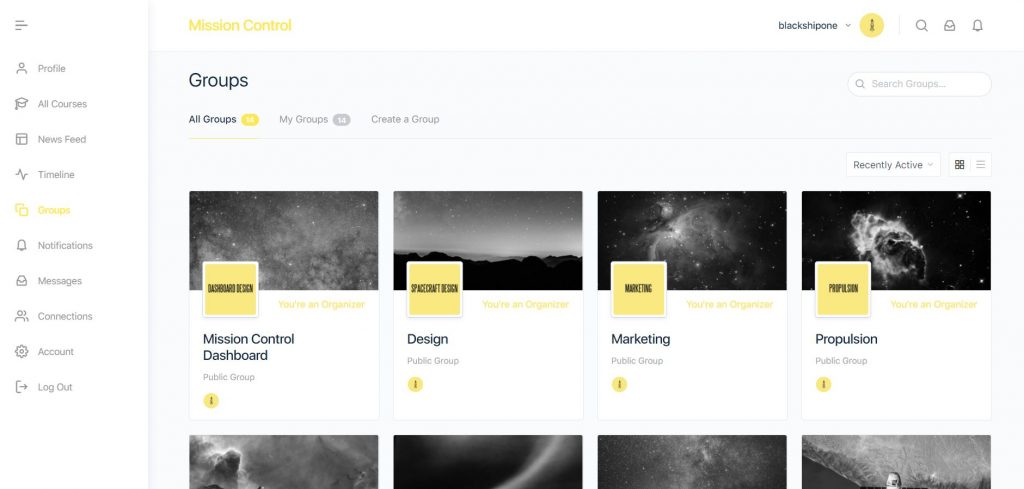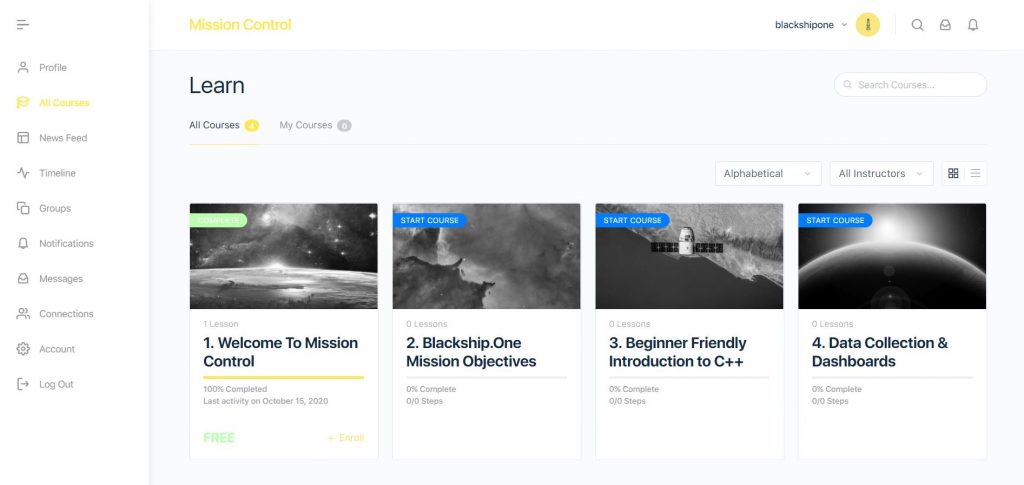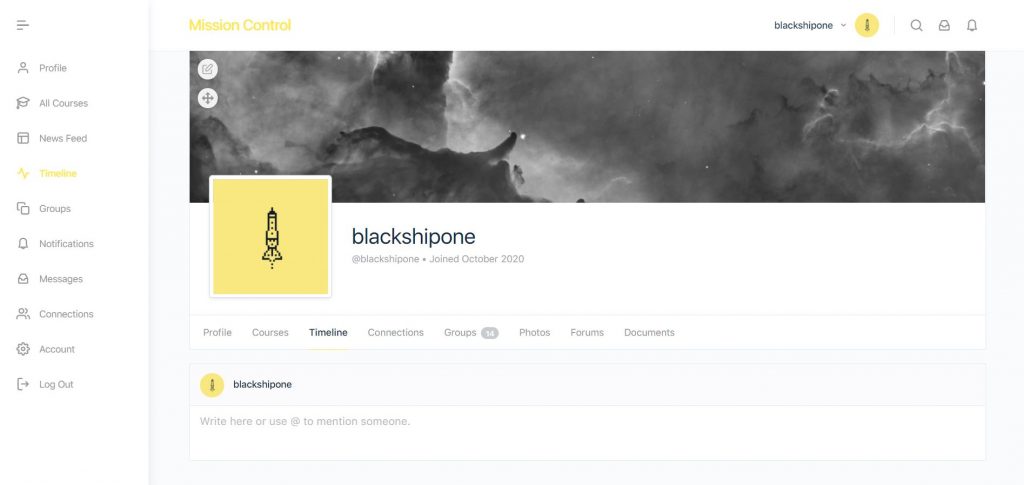BLACKSHIP ONE
Frequently Asked Questions
Below, you will find our FAQ. If you have a question that is not covered below, please feel free to reach out to us. We try to respond to all inquiries within 24 hours (although usually we’re much quicker).
Bring Your Dreams of Getting To Orbit To Life
Hi! We’re Blackship One and we help space enthusiasts, scientists and entrepreneurs get to orbit by launching their spacecraft on the back of the Blackship One Satellite. This satellite is designed to carry the primary sub-systems required to fly a successful mission at 420km above earth while allowing the micro-craft (i.e. you) to plug in and share the mothership’s resources (structure, communication, altitude control, command and data handling and payload protection). Because we can host multiple micro-craft on board we can help you dramatically reduce the cost of getting to orbit.
What is Blackship One
How much does it cost?
We want access to space to be as affordable as possible. Therefore, we’ve designed different ride-share programs based on your particular interests, budget and mission profile objectives.
Educational Package: $599 (no hardware or launch)
Pixel Spacecraft: $899 (shared)
Sprite Spacecraft: $1979 (shared)
Sprite Spacecraft: $7000 (dedicated)
Dedicated Spacecraft: $57,000 + (dedicated)
Deciding on pricing for this mission was (and continues to be a challenge). Our goal is to design affordable packages, but we also want to equip the CubeSat with higher-end components and better chances of survivability. For example, we could launch for cheaper if we scrapped certain components (camera, thrusters etc.) or used the cheapest possible off the shelf components (OTSCs). However, we don’t want to make the cheapest spacecraft possible. That’s not our mission objective. We want to make affordable spacecraft, but we want to do this without compromising our vision.
We could also launch for cheaper if we could find a free ride to space. However, waiting for a free ride could delay our launch dramatically (and it could never happen). Therefore, for this mission, we’ll be reliant on expensive commercial launch vehicles. However, the upside is that our launch can be better organized and we can lock in our launch date with more certainty.
What do I get?
What you get will be determined by which spacecraft plan you sign up for. Here are some guidelines to help you better understand what you get based on your order.
Tier 5: Educational Package: $599 (spacecraft and launch not included)
Our educational package is great for people who want to follow along and learn from home. You’ll be able to follow the journey from conceptualization to launch and beyond. This package will give you access to all digital learning material. The content contained within our learning HUB will grow as our mission progresses. You will get access to all new content as it becomes available. However, this package does not include our DIY hardware kit, onboard spacecraft, launch or post launch monitoring. This package is perfect for people who want to learn how to get to space, but who don’t want to participate in our launch.
Tier 4: Pixel Spacecraft: $899 (Shared)
The pixel spacecraft option is great for people who want to be involved in the launch. Access to our pixel spacecraft plan is essentially shared access to our ship’s main system. You will get an opportunity to share in the development of this system (both hardware and software) and the spacecraft will fly with your contributions embedded within it.
Tier 3: Sprite Spacecraft: $1979 (Shared)
With our shared sprite spacecraft option, you’ll be able to contribute to the pixel spacecraft (see above), as well as contribute to a shared sprite spacecraft, a very small 35mm 35mm satellite.
Tier 2: Sprite Spacecraft: $7000 (Dedicated)
With our tier 2 sprite spacecraft option, you’ll get access to both our sprite and pixel spacecraft plans as well as your own small dedicated spacecraft. On board, we’ll have room for 100 small sprite spacecrafts that measure 35mm x 35mm. These small spacecraft can be built and customized (within limits) using various add-on components and sensors. Add-on sensors include things like:
Temperature & Humidity Sensor (STS21)
Temperature Sensor: KY-013
Vibration Sensor: KY-002
Environmental Sensor: BME680 / BOSCH BME680 sensor
Ultraviolet (UV) Sensor: GUVA-S12SD
Ambient Light Sensor: VEML7700
Sun Sensor
Magnetic Field Sensor
Tier 1: Dedicated Spacecraft: $57,000 + (Dedicated)
If you require more power and control we have space for 5 dedicated spacecraft which can be customized to fit your mission profile needs.
All Tiers Get Access to our Educational HUB
All tiers come with access to our educational HUB where we will continuously upload new video tutorials, designs, recorded live meetings and progress updates.
Hardware Components: (Not Included in Tier 5 Educational Package)
While each tier from tier 1-4 comes with slightly different components, a basic component list can be found below:
1. Arduino (tier 1,2,3,4)
2. PCB (Printed Circuit Board) – The main board where components are placed. (tier 1,2,3,4)
3. Micro-controller – The main computer for your spacecraft. (tier 1,2,3,4)
4. FTDI board – Required in order to program your board. (tier 1,2,3,4)
5. Battery power – Required to power your board. (tier 1,2,3,4)
6. Gyroscope, Accelerometer, Magnetometer – The components help you locate your ship in space. (tier 1,2,3,4)
7. Solar kit (not used in launch, but used as a learning tool).(tier 1,2,3)
8. Transceiver – Radio communication chip. (tier 1,2,3)
9. Electronic parts: resistors, voltage regulator, capacitors, sensors. (tier 1,2,3)
10. MRAM (tier 1,2,3)
11. Camera C439 (tier 1,2,3)
12. Piezoelectric vibration and tilt sensor (tier 1,2,3)
13. Temperature measurement module (tier 1,2,3)
14. Ultrasonic Transducer (tier 1,2,3)
15. infrared temperature sensor (MLX90614) (tier 1,2,3)
16. luminosity sensor (TSL2561) (tier 1,2,3)
What does the online collaboration area look like?
It’s simple, clean, easy to navigate and encourages community participation. Here are some screenshots from our main activity page, group page, course page and a sample user profile page.




Do I need to know how to program?
No, not at the beginning. However, as we progress through our milestones you’ll be required to follow along and in order to do this you’ll need to learn how to code. However, not to worry, because we will use our online learning system to teach you how to program your spacecraft using C++.
This tutorial series will walk you through how to use C++ ((an Object Oriented Programming language (OPP)) even if you’ve never programmed before. Our tutorial series is beginner friendly and we’ve designed our course modules with non-programmers in mind.
Non-programmers often assume that programming is a really difficult subject to learn. However, that’s not the case at all. In our online course, we put a heavy focus on making the process of learning C++ as fun and easy as possible. Similarly, there are no costs associated with learning to code because all of the software we use in our course is free and / or open source software.
Similarly, after you sign up, we’ll send you your educational hardware kit and that kit will contain all of the pieces you’ll be required to assemble at home. If you’ve signed up for one of our “shared” launched plans, then the kit we send you will be used as your at-home demo kit. The actual component that goes to space, will contain your code (as well as the code from others in your group), but because you’re on a “shared plan”, only one piece of hardware will fly from your group.
If you’ve purchased a dedicated plan, then the hardware we send you, will be the hardware that we send to space.
Regardless of which plan you signed up for, you’ll need to follow along with our coding tutorials in order to test your spacecraft and link it to your mission control dashboard.
When planning this launch, we decided to make everything Arduino compatible (your test microcontroller is the Atmel ATMEGA-328) and all of the code is written in C++. Not only is C++ a powerful language, it’s also easy to find library and code snippets online.
Is the project open source?
After the project is launched, we will open source the project (processes, designs, documents, code etc.). However, before launch, the project will be closed source.
We decided to take this hybrid route because we want to make the knowledge public, but we also require a way to fund the mission (space is VERY expensive).
Because we’re not VC or government backed (an we don’t want to be), we’ve decided to fund the project through participant orders. When you join the voyage, you’re directly contributing to the costs of going to space. This “shared expense” approach makes the most sense for our particular mission profile. This is because the majority of the people who want to participate in the Blackship One project want to learn and be an integral part of the process. People who sign up don’t want to be passive spectators or “sponsors”. Participants want to get their hands dirty on day one BE PART of the launch. Essentially, when you sign up, you become part of the team.
How involved will I be?
Hopefully really involved. We need all of the help we can get. That said, the Blackship One launch project can be as hands-on or as hands-off for you as you’d like.
There are many different ways to be involved.
1. As soon as you sign up, someone on our team is going to get in touch with you to figure out how you can best contribute and learn from the project. It’s our main priority after you sign up that you feel like you’re part of the team. Every single person who signs up is an integral part of this mission’s success. Blackship One will not be a project with tens of thousands of people involved. We’ll likely be a group of a couple hundred people at most. Out of this small group, we’ll break off into even smaller groups to focus on our individual areas of interest. These groups will most likely consist of about 20-30 people. Many of the people in these groups you’ll get to know personally. These people will become your Blackship One family.
Fom our perspective, the more you can participate, the better.
2. You’ll also participate through the construction of your own spacecraft at home (assembly, testing etc.). This will give you countless hours of learning to do on your own. You simply follow our online tutorials and communicate with people who are on the same step as you in our online learning center.
3. You can also get involved in our weekly meetings where we discuss top level mission objectives, issues and obstacles. If you miss these live sessions, you can view recorded video sessions after the live sessions are over. After each session, you can continue to comment on the topics discussed using our community communication tools.
4. You can participate in niche-specific groups. For example, there are sub-groups for design, engineering, electronics, avionics, propulsion, programming and marketing. After you sign up, you’ll be prompted to join the groups that interest you most. We’ll encourage you to join two types of groups.
First, we’ll encourage you to join the groups where you think you can have the most impact based on your personal expertise. In these groups you can act as a mentor to others looking to learn from your area of expertise.
Secondly, we’ll also encourage you to join groups that you want to learn from. You’ll join these groups to learn from people who are experts on these topics.
As a side note, some people have contacted us worried that they won’t have a lot to contribute (skills, time etc). You might not know what a variable in C++ is yet. You might not know what an accelerometer is. You might not have ever contributed to any space project ever. With Blackship One, this isn’t an issue at all.
We’re a friendly group of people working in open environments and we know being involved in the Blackship One project is as much about learning as it is about doing.
Therefore, if you show up to the meetings and ask questions rather than give advice, that’s fine. In our online community, if you’re the one asking questions rather than responding to questions, that’s also fine. We just want you to be there with us learning along the way. In two years from now you’ll be an expert in C++ variables and you’ll know what an accelerometer is. So don’t worry about not knowing these things now. They might seem intimidating now, but in two weeks time, you’ll already start to get a handle on them. In time, you’ll learn these concepts and soon enough you’ll be the one answering, rather than asking the questions 🙂
No one person will make this project a success. Launching a satellite into orbit will require many different people with many different skillsets. Your goal should be to start with what you have and focus on building from there.
As you can see, there are countless ways to contribute to the project and we welcome people of all skill levels.
When will the launch date be and what are our chances of success?
We want to give the project a sufficient runway in order to ensure that we meet our project goals and have a successful launch. Therefore, we’ve decided to aim for a 2023 (Q4) launch date. This gives us ample time to plan and prepare for launch.
Generally speaking, CubeSat launches have very high failure rates (as we explore in this blog post here). NASA has also released information on small sat mission failure rates and the study found that “between the years of 2000 to 2016, 41.3% of all small satellites launched failed or partially failed. Of these small satellite missions, 24.2% were total mission failures, another 11% were partial mission failures, and 6.1% were launch vehicle failures.”
Luckily, NASA has also released a document entitled “Increasing Mission Success of CubeSats” and the FSGC published another document called “Statistical Analysis of CubeSat Mission Failure“. These documents give us insight into what can go wrong and what can be done to remedy these failures.
The Blackship One launch project will be following the guidelines and recommendations outlined in these documents.
How will I communicate with my spaceship?
How long will we stay in orbit?
It’s impossible to say for sure. Likely, a few months to a few years. Our goal is to remain in orbit for as long as possible. We plan on extending our mission lifetime by including propulsion as one of our spaceship’s components. If we can make propulsion a reality, we can dramatically extend our CubeSat’s operational life. We’ll also try to get into a higher orbit to slow the process of orbital decay. It’s impossible to say for certain how long we’ll stay in orbit, but on average nanosats / cubesats under 10kg have an average lifespan of about 1.1 years. You can see data related to CubeSat lifetime here (based on data from from nanosats.eu)
Who's the Team Behind Blackship.One
 Hello. My name is Sterling and I’m the founder of Blackship.One. My personal background over the last 20 years has primarily been in software development, planning and design. I’ve built countless software products ranging from learning management systems to complex financial modeling software. I started Blackship.One’s space and engineering blog early in 2020 with a small team made up primarily of software and hardware engineers. Our goal is to publish practical and in-depth space, science, software and engineering related information to help people launch their own independent space projects into orbit and beyond. On our blog we talk about everything from nanosat power requirements to cubesat mission profile advances.
Hello. My name is Sterling and I’m the founder of Blackship.One. My personal background over the last 20 years has primarily been in software development, planning and design. I’ve built countless software products ranging from learning management systems to complex financial modeling software. I started Blackship.One’s space and engineering blog early in 2020 with a small team made up primarily of software and hardware engineers. Our goal is to publish practical and in-depth space, science, software and engineering related information to help people launch their own independent space projects into orbit and beyond. On our blog we talk about everything from nanosat power requirements to cubesat mission profile advances.
Moving forward, our goal is to work together as a small community and launch our first CubeSat into LEO sometime in late 2023 or 2024. After the launch of the project, we will make the entire program open source.